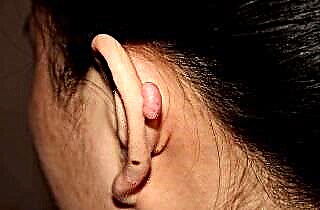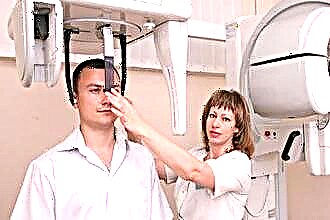Often people who constantly or periodically suffer from a runny nose do not even know what insidious consequences a running sinusitis can cause. And it develops from a simple nasal congestion, with which not everyone is in a hurry to see a doctor. But without timely and correct therapy, acute sinusitis quickly turns into chronic.
The mechanism of the onset of the disease
 The neglected form of sinusitis is preceded by inflammation of the sinuses located in the upper jaw, which serve to normalize intracranial pressure. When viruses, bacteria, allergens enter the sinus, the mucous membrane becomes inflamed and swollen, the secret begins to actively separate. Accumulating in the maxillary sinuses, it cannot evacuate outward, since the exit to the nasal cavity is closed due to edema. A favorable environment is formed for the development of microorganisms, and inflammation goes into an active stage. This is how sinusitis develops. If adequate treatment measures are not taken in time, the disease is transformed into an advanced form.
The neglected form of sinusitis is preceded by inflammation of the sinuses located in the upper jaw, which serve to normalize intracranial pressure. When viruses, bacteria, allergens enter the sinus, the mucous membrane becomes inflamed and swollen, the secret begins to actively separate. Accumulating in the maxillary sinuses, it cannot evacuate outward, since the exit to the nasal cavity is closed due to edema. A favorable environment is formed for the development of microorganisms, and inflammation goes into an active stage. This is how sinusitis develops. If adequate treatment measures are not taken in time, the disease is transformed into an advanced form.
It is provoked, in addition to allergens and microorganisms, nasal trauma, congenital anatomical defects (for example, curvature of the nasal septum). But the more accurately the cause of the disease is established, the easier it is to cope with it.
Chronic sinusitis is most often treated with antibiotics, however, if taken uncontrollably or incorrectly, antibiotic-resistant strains of bacteria are formed, which are then difficult to remove from the focus of inflammation.
Forms of the disease
The manifestations of the disease directly depend on what type of inflammation was originally. For example, when there is a lingering runny nose, we are most likely talking about the exudative form of sinusitis.
The type of inflammation, the degree of damage to the sinuses of the nose determine the nature of the discharge. So, with a purulent form of sinusitis, mucus contains a lot of pus, as evidenced by a yellowish tint and an unpleasant smell of snot. If they become viscous, slimy, the likelihood of a catarrhal form of the disease is high.
With any type of disease, nasal congestion is felt, nasal breathing is difficult. Patients often complain of dryness of the pharynx and a persistent cough with expectoration of sputum. Another distinguishing feature of sinusitis is an increase in the amount of discharge with an admixture of pus.
Dangerous consequences of the disease
 Sinusitis is terrible not so much by the nature of the course, as by possible complications. The infection that provoked it can easily spread throughout the body, affecting other systems and organs. This probability is highest when there is a blood-splattered discharge. This means that the vessels in the nose are damaged and harmful agents can easily enter the bloodstream. Against this background, the following diseases can develop:
Sinusitis is terrible not so much by the nature of the course, as by possible complications. The infection that provoked it can easily spread throughout the body, affecting other systems and organs. This probability is highest when there is a blood-splattered discharge. This means that the vessels in the nose are damaged and harmful agents can easily enter the bloodstream. Against this background, the following diseases can develop:
- chronic sinusitis;
- eye diseases;
- complications in the ears;
- sepsis;
- inflammation of the facial nerve;
- meningitis;
- periostitis.
Sluggish form of the disease
The least dangerous consequence of untreated sinusitis is its transition to a chronic form. This stage is extremely difficult to recognize, since it practically does not differ in symptoms from a common cold. It is characterized by general fatigue, runny nose, nasal congestion. Only a competent doctor will see the subtle signs of chronic sinusitis.
Among them - complaints of frequent headaches against the background of a persistent runny nose. At the same time, the patient feels overwhelmed, feels unwell, although the temperature is kept within normal limits, not exceeding 37.5 ° C. Important distinguishing symptoms are a congestion of the nostrils on one side and an obvious unpleasant odor from the nose.
The final diagnosis is made after collection of tests and X-ray of the sinuses. The chronic form of sinusitis is treated for a long time by taking medications prescribed by a doctor.
Eye diseases
Vision problems can manifest themselves in completely different forms: from vein thrombosis in the organs of vision to retinal detachment. Today, most pathogens are insensitive, and in some cases completely resistant to popular antibiotics. Therefore, it became more difficult to treat sinusitis and its complications. This is especially true for children in whom the body's defenses are still weak.
 When the accumulating mucus from the sinuses is impaired, the risk of the infection spreading to the eyes is very high. If this happens, catarrhal or purulent inflammation develops in the eye sockets. Signs of complications in this case are:
When the accumulating mucus from the sinuses is impaired, the risk of the infection spreading to the eyes is very high. If this happens, catarrhal or purulent inflammation develops in the eye sockets. Signs of complications in this case are:
- deterioration of vision;
- redness of the eyelids;
- violation of eye mobility;
- temperature increase;
- severe pain when pressing on the eye sockets;
- confusion of the patient's consciousness.
Ear complications
Since the hearing organs are anatomically connected to the nasal cavity, sinus infections often enter the auditory tube, causing otitis media in the middle ear. Children are especially susceptible to this ailment, since their auditory tube is located horizontally. It is also much shorter than the adult auditory tube. In the latter, it is located at an angle, and therefore has a greater length, and it is more difficult for microbes to penetrate inside.
But if this does happen, it is not easy to treat purulent otitis media of a similar origin. Usually it is accompanied by a high fever, but the disease can be latent.
Sepsis
If the infection enters the bloodstream, sepsis is likely to occur. Then the goal of therapy is not only to extinguish the focus of inflammation, but also to increase the body's resistance. Surgery is usually done to remove the pus and inflammation. At the same time, a course of treatment with antibiotics and antiseptic drugs is prescribed.
The main danger of sepsis is that microbes settle and form foci of inflammation in the immediate vicinity of the brain. It should be noted that this disease due to sinusitis is rare, but the likelihood of its development should not be discounted.
Inflammation of the facial nerve
No less formidable is the defeat of the trigeminal nerve, which begins at the pons in the brain and divides into three branches: the maxillary, mandibular and orbital nerve. Inflammation and edema of at least one of these processes soon covers the entire nerve, trigeminal neuritis develops. The disease is characterized by severe pain in the affected area of the face, as well as paresis. Neuritis therapy is extremely difficult, since the antibiotic does not directly enter the site of infection.
Meningitis
The problem is that chronic sinusitis, due to its mild severity, is often ignored, not noticed, and therefore not treated in time. But occasionally microbes that accumulate in the maxillary sinuses cause meningitis - an inflammation of the membranes of the spinal cord and brain. Its main symptoms are:
- severe headaches;
- vomiting that does not bring relief;
- fever;
- tense muscles in the back of the head;
- fear of light and sounds.
Today meningitis is treated if it is diagnosed on time and the necessary measures are taken. But in most cases, the disease progresses quickly. The complexity of therapy lies in the fact that it is not possible to act directly on those areas where the infection develops.
Therefore, active treatment is carried out for at least two weeks in a row. The patient undergoes lumbar punctures, which help to remove the waste products of pathogenic bacteria from the focus of inflammation and eliminate intoxication. At the same time, antibiotics are prescribed.

Periostitis
Inflammation of the periosteum is removed exclusively with antibacterial agents.Moreover, it is necessary to inject them directly into the focus of inflammation. If sinusitis has become the cause of periostitis, the disease develops in a simple or purulent form.
Be that as it may, the treatment must take place under the supervision of a doctor, otherwise a mistake in therapy may lead to surgery.
Treatment of advanced forms of sinusitis
In the most severe cases, the patient's maxillary sinus is pierced in order to draw out pus from it and inject antiseptics to stop and extinguish the inflammation. A good effect is always given by physiotherapy, procedures using medicinal herbs. But they should be carried out only in consultation with the doctor.
Taking antibiotics is usually not prescribed for this form of sinusitis, since they have little effect, but at the same time greatly weaken the body. Be sure to prescribe proper nutrition and physical activity to enhance immunity.
If the treatment of sinusitis is carried out on time and correctly, it rarely goes into a neglected form and does not threaten with terrible complications.



